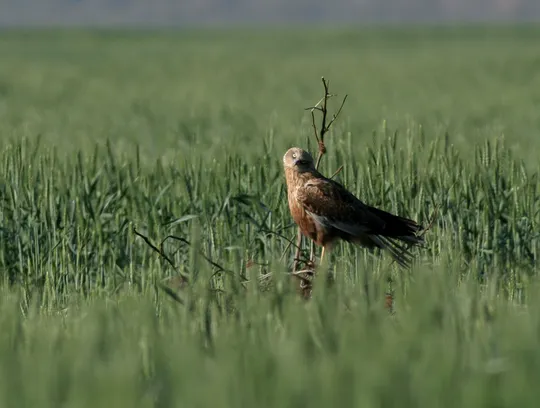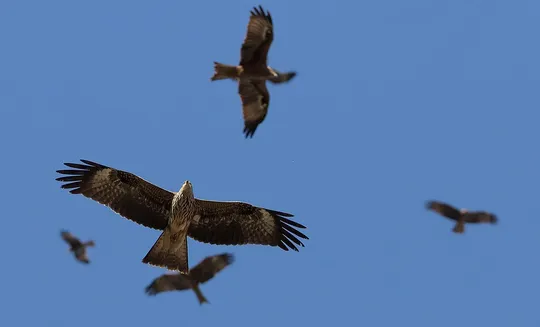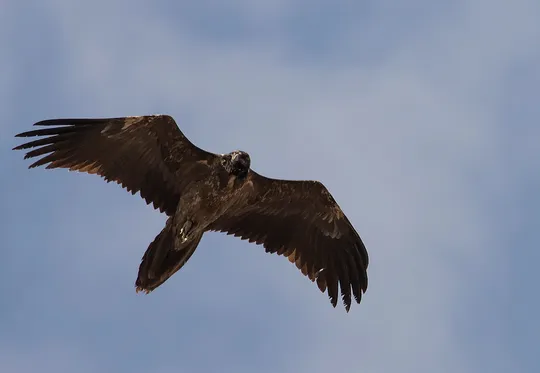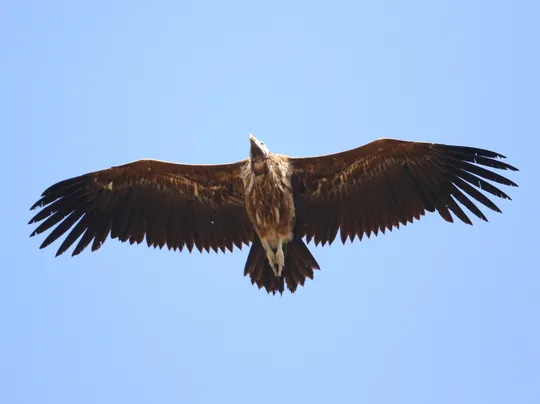Aegypius monachus
 Regionally Extinct
Regionally Extinct
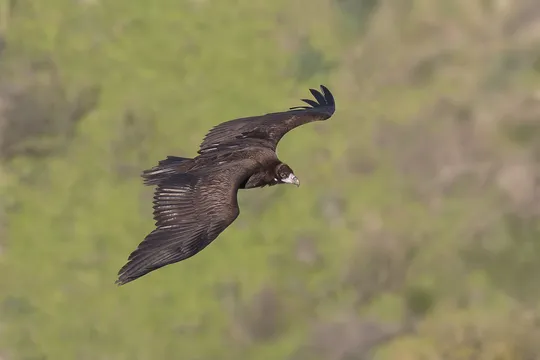
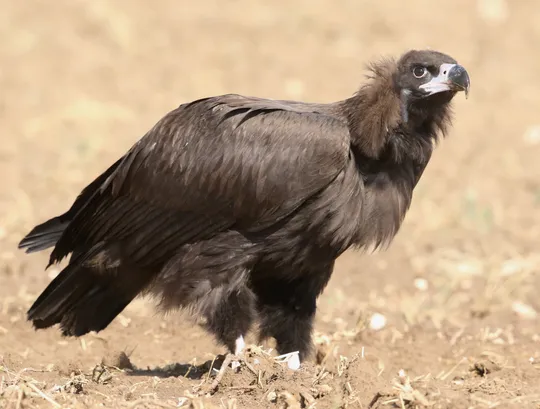
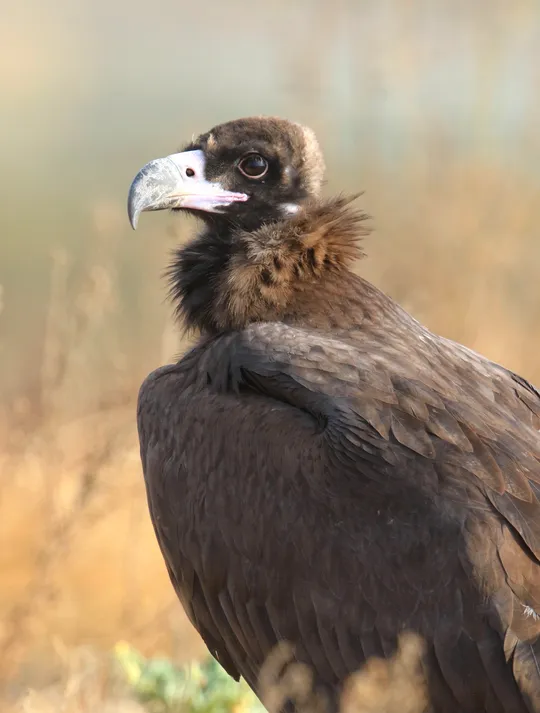
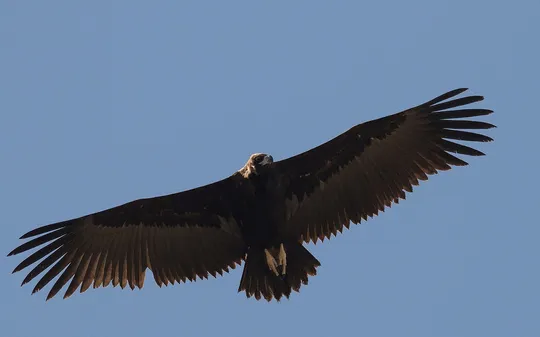
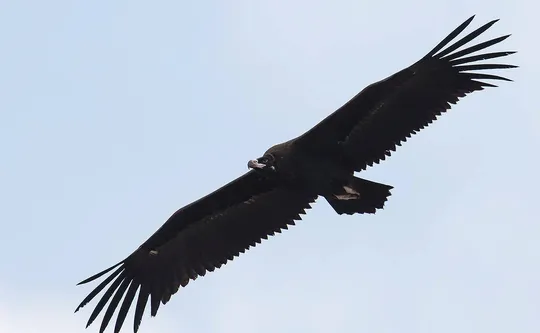
| Habitats | Mediterranean Cliffs, Parks & Woodlands |
|---|---|
| Presence In Israel | Resident |
| Breeding In Israel | Bred in the past |
| Migration Types | Resident |
| Zoographical Zones | Mediterranean |
| Landscape Types | Mountainous, Cliffs |
| Vegetation Types | Mediterranean Maquis, Mediterranean Garrigue, Steppe |
| Vegetation Densities | Medium, Low |
| Nest Locations | Tree |
| Diet Types | Carrion |
| Foraging Grounds | Ground |
| Body Sizes | Large (over 1000g) |
| Threat Factors | Pesticide Poisoning, Lead Poisoning, Hunting and trapping |
The Cinereous Vulture is a very large and dark scavenger that inhabits forested mountain slopes and nests on trees. The mature bird is a relatively uniform dark brown, except for a pale crown and a featherless head. The juveniles are darker and their feathers are shiny black. Its beak is large and very strong. In flight it can be identified by its long wide rectangular wings and short tail.
The Cinereous Vulture is now a rare winter visitor and passage migrant in the Golan Heights, the Negev and the Arava. In the past, it was recorded breeding in northern Israel. A lone pair nested on the Arbel Cliffs in 1864 (Tristram 1867). Additional observations in the summer months were recorded in the late 19th and early 20th centuries in the Mt. Tabor area, Jericho and Jerusalem, but there is no evidence of additional nesting (Shirihai 1996).
The Cinereous Vulture nests in mountainous areas and on cliffs in Mediterranean or steppe climates, usually on trees. In winter and on migration it is also seen in open flat landscapes.
The Cinereous Vulture nested in northern Israel until the early 20th century. In recent decades, it is a rare passage migrant and winter visitor, mainly in the Golan and Galilee. The probability of the species returning to nest in Israel naturally is estimated to be low.
The probability of the Cinereous Vulture returning to nest in Israel naturally is estimated to be low because of the population decrease in southeastern Europe and the state of conservation in neighboring countries (Syria, Lebanon and Turkey) that does not permit a continuous population from Europe to the Middle East to exist. On the other hand, the species has been prioritized for restoration (Hatsofe & Mayrose 2015, Master Plan for Raptor Conservation in Israel) because of its important function in locating and opening carcasses in forested areas, along with the maturation of natural and planted woodland in northern Israel.
- הצופה, א. ומירוז, א. 2015. תכנית אב לשימור העופות הדורסים בישראל. מסמך פנימי של רשות הטבע והגנים.
- פז, ע. 1986. עופות. מתוך אלון, ע. (עורך), החי והצומח של ארץ ישראל. כרך 6. הוצאת משרד הביטחון, ישראל.
- Shirihai, H., 1996. The Birds of Israel. Academic Press, London.
- Symes, A. 2013. Species generation lengths. Unpublished, BirdLife International.
- Species page at Birdlife International
Distribution maps
The maps presented here provide visual information on the distribution of species in Israel from the past and present, and the changes in occupancy and breeding density during the comparison period. For further reading
Relative Abundance 2010-2020
Breeding density values in the current decade as determined from experts' opinion and observations from databases.
| Data Missing | Sporadic | Limited Sites | Low Density | High Density |
|---|---|---|---|---|
| 8 | 12 | 12 | 21 | 19 |
Relative Abundance 1980-1990
Density values based primarily on the book The Birds of Israel (Shirihai 1996).
| Data Missing | Sporadic | Limited Sites | Low Density | High Density |
|---|---|---|---|---|
| 5 | 14 | 14 | 17 | 22 |
Occupancy 1990-2020
The map shows differences in the species breeding distribution between the 1980's breeding map and the current weighted breeding evaluation. Negative value - species previously bred in the grid and is not presently breeding; positive value - species has not previously bred in the grid and is currently breeding.
| Data Missing | No Change | Occupancy Increase | Occupancy Decrease |
|---|---|---|---|
| 6 | 35 | 1 | 9 |
Change in Relative Abundance 1990-2020
The map shows the changes in the relative abundance of a species in each of the distribution grids between the breeding map of the 1980s and the weighted current breeding evaluation. Negative values - decline in abundance; positive values - increase in abundance; zero - no change in abundance.
| 80 to 100 | 50 | 20 to 30 | No Change | 30- to 20- | 50- | 100- to 80- | Data Missing |
|---|---|---|---|---|---|---|---|
| 0 | 4 | 2 | 22 | 12 | 14 | 11 | 16 |
| Rarity | |
|---|---|
| Vulnerability | |
| Attractiveness | |
| Endemism | |
| Red number | |
| Peripherality | |
| IUCN category | |
| Threat Definition according to the red book |
